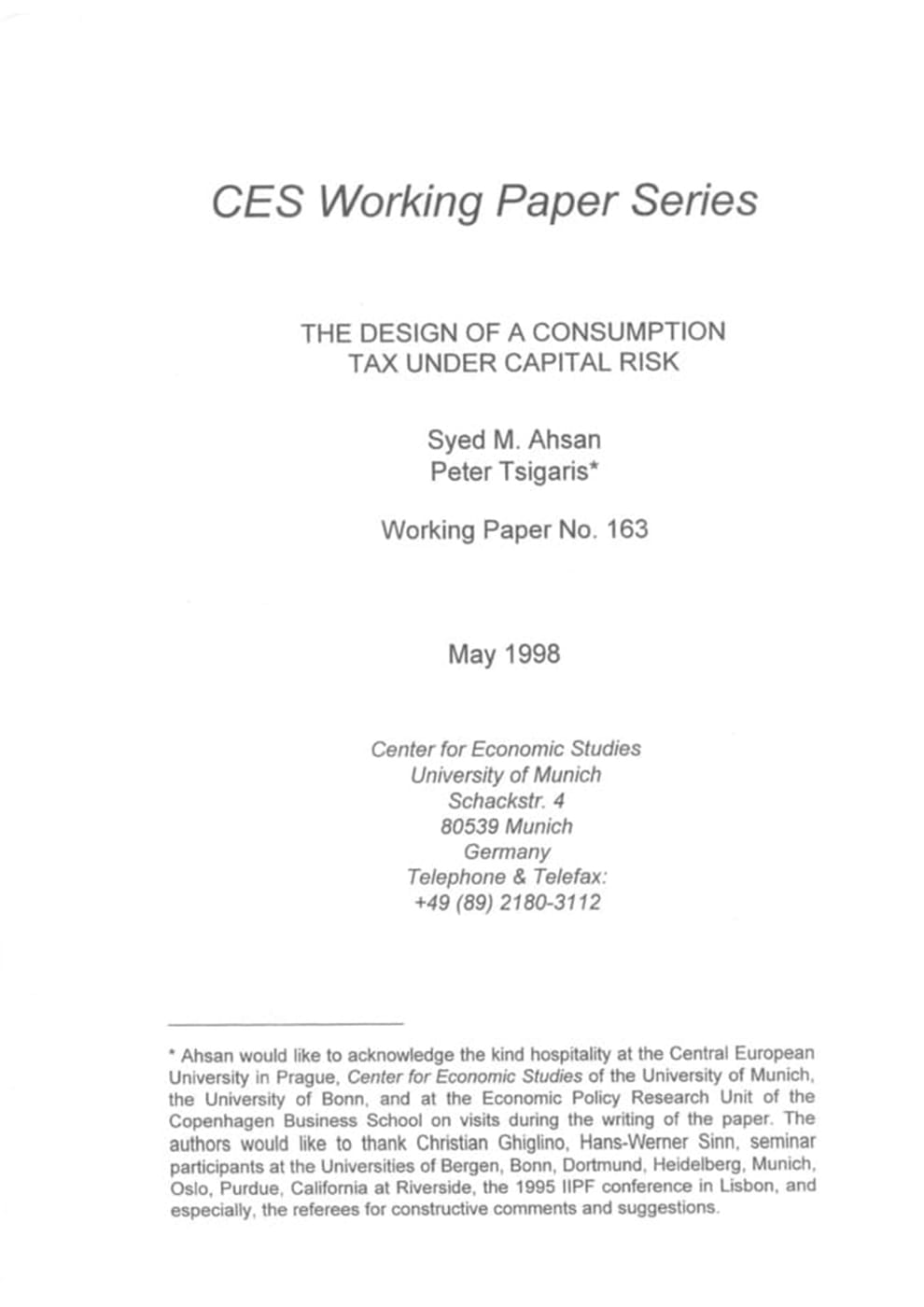The Design of a Consumption Tax under Capital Risk
CES, Munich, 1998
CES Working Paper No. 163

This paper focuses on the design of a consumption tax in a world of capital risk. The certainty literature discusses two standard options, namely the cash flow method and the pre-payment method (i.e., the wage tax), and finds the two approaches to be equivalent. Models that consider capital risk (via asset choice) reach different conclusions. This discrepancy arises in part due to a different choice of the social discount rate. In light of the failure of the discount rate argument to resolve the issue at hand, we explore the market certainty equivalence of risky government revenue. We let revenue risks stay in the private sector, and examine the market value of the feasible transfer (e.g., in the form of a public good) back to households. We reach three broad conclusions. First, we find that if the state returns to each household its own tax revenue risks, equivalence will be re-established as in certainty models. Next, we show that if the state engages in intergenerational risk sharing (e.g., through a system of stochastic tax-transfers), the wage tax cannot be construed to be a valid pre-payment alternative to the cash flow or a modified wage taxation system. Efficient risk allocation across generations under a cash-flow tax (or, one that includes future captial gains as well as wages in the tax base) leads to a Pareto improvement over the simple wage tax. Finally, a major policy implication follows; in order to be practicable, a consumption tax would have to be implemented via registered savings accounts much in the fashion of the Canadian RRSP program rather than through the pre-payment route.